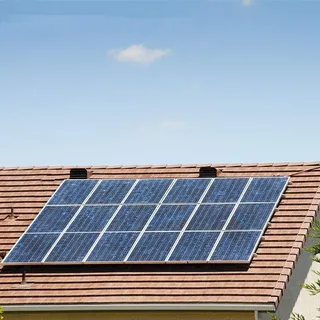How to Choose the Best 30 kW Solar System for Your Needs?

Solar energy has become one of the most cost-effective and sustainable energy solutions for businesses and large homes. Investing in a 30 kW solar system can significantly reduce electricity costs while contributing to a greener planet. But how do you choose the best system for your needs? This guide will walk you through everything you need to know.
Understanding a 30 kW Solar System
What Is a 30 kW Solar System?
A 30 kW solar system consists of solar panels, an inverter, and optional battery storage, designed to generate approximately 120-140 kWh per day under optimal conditions. It is ideal for commercial properties, large households, and small industries.
How Much Energy Does It Produce?
On average, a 30kw Solar System generates around 36,000–42,000 kWh annually, depending on location and sun exposure. This is enough to power a small business, a large home with heavy appliance usage, or a farm.
Ideal Applications
-
Small to medium-sized businesses
-
Large households with high energy consumption
-
Agricultural setups
-
Schools and community buildings
Key Factors to Consider When Choosing a 30 kW Solar System
1. Energy Needs Assessment
Before purchasing a system, analyze your electricity usage. Check your monthly bills to estimate how much power you need.
2. Roof Space and Installation Area
A 30 kW system requires around 150–180 square meters of roof space. Ensure your roof is strong enough to support the panels.
3. Local Climate Conditions
Solar panel efficiency varies based on sunlight hours, shading, and temperature. Areas with more sun exposure will yield better output.
Types of Solar Panels for a 30 kW System
Monocrystalline vs. Polycrystalline vs. Thin-Film
-
Monocrystalline panels – High efficiency, long lifespan, best for limited space.
-
Polycrystalline panels – Cost-effective but slightly lower efficiency.
-
Thin-film panels – Flexible but less efficient, requiring more space.
Choosing the Right Inverter
String Inverters vs. Microinverters
-
String inverters – Cost-effective but less efficient in shaded conditions.
-
Microinverters – Better efficiency, works independently per panel.
Importance of Inverter Efficiency
Look for high-efficiency inverters (95% or above) to maximize power conversion.
Battery Storage Options
Do You Need a Battery?
Batteries provide backup power and store excess energy, useful for off-grid systems or peak energy savings.
Types of Solar Batteries
-
Lithium-ion batteries – High efficiency, longer lifespan.
-
Lead-acid batteries – Lower cost but shorter lifespan.
Grid-Tied vs. Off-Grid Systems
Grid-Tied Pros and Cons
✅ Lower cost, access to grid backup
❌ No power during outages
Off-Grid Benefits
✅ Energy independence, no electricity bills
❌ Requires battery storage, higher initial cost
Conclusion
A 30 kW solar system is a fantastic investment for businesses and large homes, offering substantial energy savings and sustainability. By considering your energy needs, panel efficiency, inverter choice, and battery storage, you can make the best decision. Regular maintenance of a 50Kw Solar System can ensure optimal performance and longevity, maximizing the return on investment over time.
FAQs
1. How much does a 30 kW solar system cost?
The cost ranges between $25,000–$40,000, depending on panel type and installation complexity.
2. How long does a 30 kW system take to pay off?
The typical payback period is 4–7 years based on electricity savings and incentives.
3. Can I install a 30 kW solar system at home?
Yes, but ensure you have sufficient roof space and energy demand to justify the investment.
4. Do I need a battery with my 30 kW system?
Not necessarily, but it helps with energy storage and backup power.
5. How long do solar panels last?
Most high-quality panels last 25–30 years, with warranties covering efficiency degradation.
- Art
- Causes
- Crafts
- Dance
- Drinks
- Film
- Fitness
- Food
- Jeux
- Gardening
- Health
- Domicile
- Literature
- Music
- Networking
- Autre
- Party
- Religion
- Shopping
- Sports
- Theater
- Wellness


